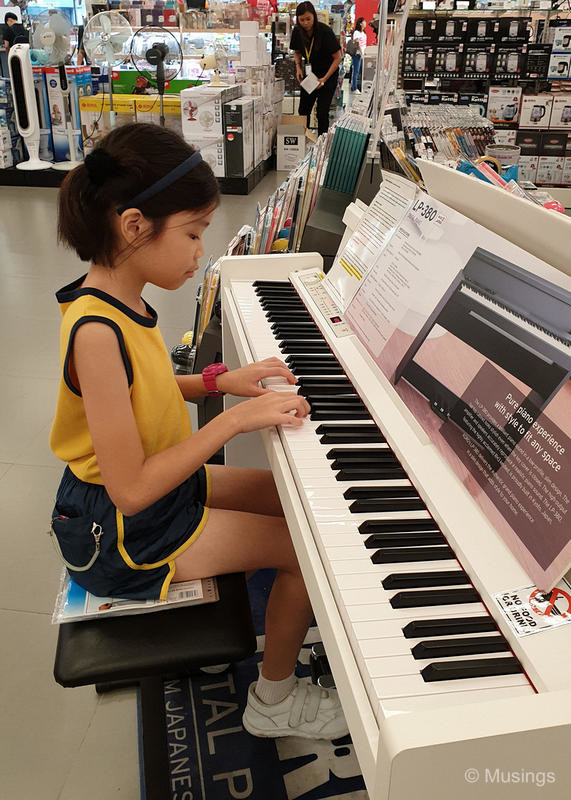I wrote my first music compositions – and specifically piano pieces – almost 25 years ago, and largely working off a Korg music workstation at my old family home. This particular digital keyboard was one of those heavy-duty synthesizers used by professional stage musicians, and no – it wasn’t even mine ironically, but my younger brother’s. Oddly, he hardly ever touched it despite spending a lot of money on it – I think it cost between SGD3K to SGD4K i.e. the price of a respectable upright Yamaha back then. So, I ended up being the principal user of it, and even did my first recordings using it.
Fast forward from that point by another 22 years in 2016. We were looking around at piano options then for our girl to start learning how to play, and I gave serious thought to getting a digital rather than an acoustic one. I badly wanted to be able to record again. But most piano teachers will however warn against acquiring a digital piano for young learners, on account that the touch, feel and playing of piano pieces on a digital piano is different from an acoustic one. And if exams and regulated assessments for young learners are going to continue to be on traditional acoustic pianos, that would accordingly then also be the preferred instrument to learn with.
But we arrived of course into a compromise of sorts that Nov 2016: we bought one of the better pre-owned Yamaha uprights, but also fitted after-market with Yamaha’s own digital module. Unfortunately, the audio output of the module wasn’t particularly good nor versatile – and it ended up being a white elephant. Thankfully, the Yamaha U30BL upright has turned out to be a great investment, and between sees daily use between Hannah and myself.
The two most recent series of home recordings – blogged here and here – I did with the U30BL though proved again a single important point: that it was just practically impossible to get good recorded audio in our living room; no matter the placement of microphones and the amount of clean-up work I do in post-processing. As one friend who’s also musically trained quipped – there’s just too much furniture in my living room that’s bouncing and sending audio waves in all directions. So, I finally gave up on that and decided to seriously re-look into getting a digital piano to – once and for all – get my permanent fix of recording the pieces I enjoy playing.
Like most electronic things, there’s a sizable number of manufacturers of such equipment, but the best known and important ones include selected traditional makers of acoustic pianos: i.e. Yamaha, Kawai – and also makers of professional musician equipment: Korg, and Roland. Interestingly, all four are Japanese companies. These manufacturers have a huge inventory list of models that span every budget: from beginner ones that cost several hundred dollars, to ones that are designed like grand pianos costing five digit figures. Like the Kawai CP1 Digital Grand Piano that costs USD22K. Ouch!

After the usual spreadsheet itemizing the ones that are distributed here, I found that the sweet spot for these pianos – with a good balance of key action, features, sampled pianos, and output audio of course – is roughly around SGD2.5K to SGD3.5K, with a couple of really good ones at around SGD5K. In truth, I was willing to pay up to that amount for something I knew I was going to use extensively. But this time round of hunting for technological equipment, I was faced with a constraint that wasn’t budget-related: the spot where the digital piano would be located at home would be in the master room (more on that in the follow-up posts), and the space I had to work with was very limited LOL. And the challenge? The better digital pianos are also invariably larger in size. Arrgghh!!
After almost a month of checking-out, reading-up and watching a lot enthusiast home-made recordings on these pianos, and all at the same time, limited significantly by how large it could be, I settled on the Casio PX870. Not a Yamaha? Or a Kawai? Doesn’t Casio only make kiddie pianos? Do they even make digital pianos that are any good? LOL. Continued in the next post!
Recent comments